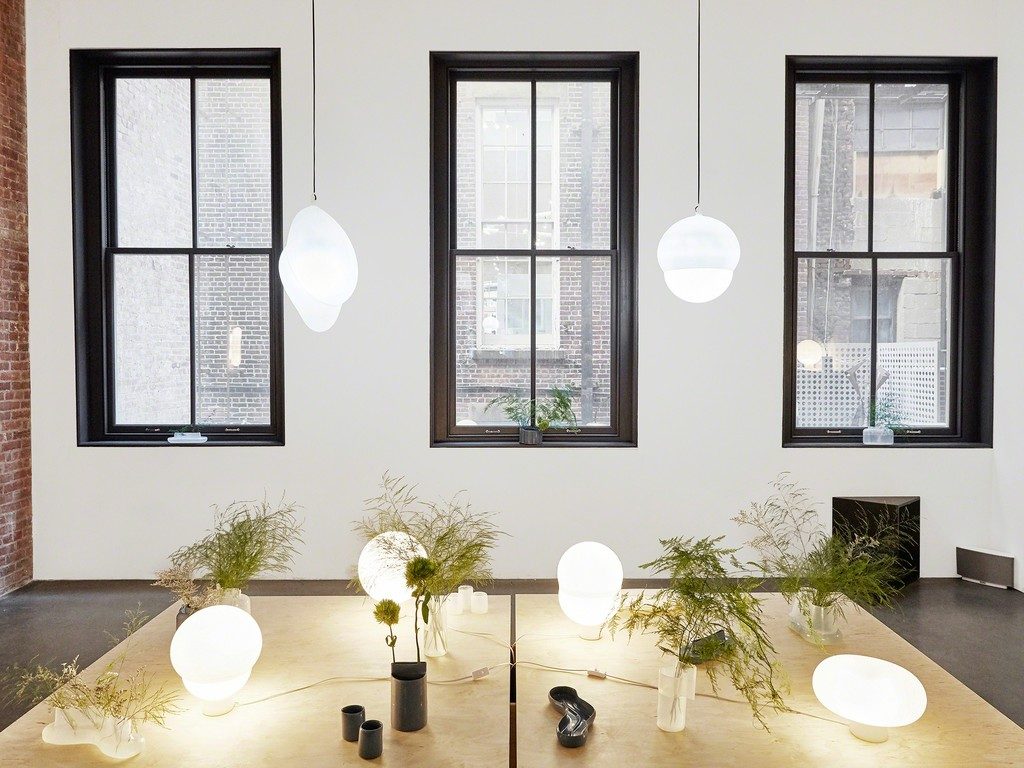In the current Liquid to Air: Pneumatic Objects exhibit at Patrick Parrish Gallery, New York, 3D printed inflatables create a striking set of hanging lamps, wall lights, vases and household objects.
Made by Swiss designer Christophe Guberan in collaboration with the Self-Assembly Lab at Massachusetts Institute of Technology (MIT), these products are a showcase of the group’s Rapid Liquid Printing technique that has been cropping up in house and car interiors since its launch in 2017.
Liquid to Air: Pneumatic Objects from Self-Assembly Lab, MIT on Vimeo.
Simple, fast and free-form
Rapid Liquid Printing is a method of 3D printing that takes place in a vat of material. In this vat, the gelatinous, self-healing materials serves as support to the quick writing of a liquid ink, rapidly extruded through the fine tip of a needle.
The technology was developed as a method of rapidly fabricating free-form object designs, at a speed, and with ease to rival other available 3D printing techniques.
Objects 3D printed in the vat can be made from a variety of different inks, though silicone and latex rubber is the most common combination to date.

Rapid Liquid Printing for home & car
The first commercial example of MIT’s Rapid Liquid Printing technology was the Bassline Table, again designed by Guberan, for UK based interior design firm Steelcase.
Since then, the technology has also been used in a demonstration at Design Miami and, most recently, it was picked up by BMW as a promising technology for the development of more comfortable car seats.
3D Printing Industry saw the Liquid Printed Pneumatics, produced for BMW, firsthand at The Future Starts Here exhibit in London’s V&A Museum.

Much more than the average FFF
Though presently Rapid Liquid Printing applications are, generally speaking, reserved for artistic expression, it is intriguing to see that the lab are taking such a commercial route with the method.
Each of the objects displayed at Patrick Parrish Gallery are available for purchase, many falling within the range of “affordable art.”
What’s more is that the pieces, which are essentially created using a type of FFF technique, manage to command such a respectable price tag. The cheapest pieces in the collection are sold for $150 – $250 and, at the higher end, the hanging light fittings reach prices of $2,800 – $3,200.

Liquid to Air : Pneumatic Objects is on display at Patrick Parrish Gallery, New York from July 10 through August 25, 2018.
For more exclusive interviews and news subscribe to the 3D Printing Industry newsletter, follow us on Twitter, and like us on Facebook.
Search and post on 3D Printing Jobs to find new design opportunities and talent.
Featured image shows a household object in the process of printing. Photo via Patrick Parrish Gallery



